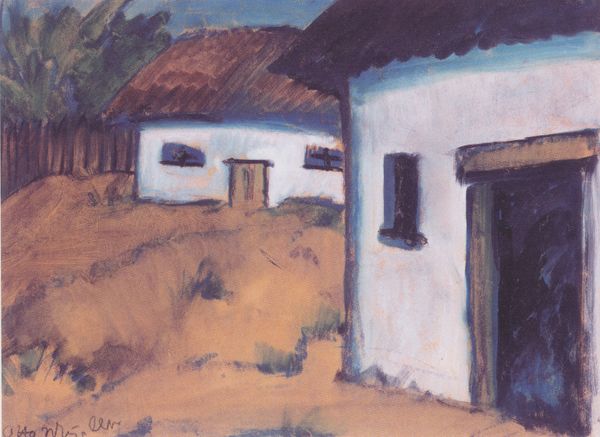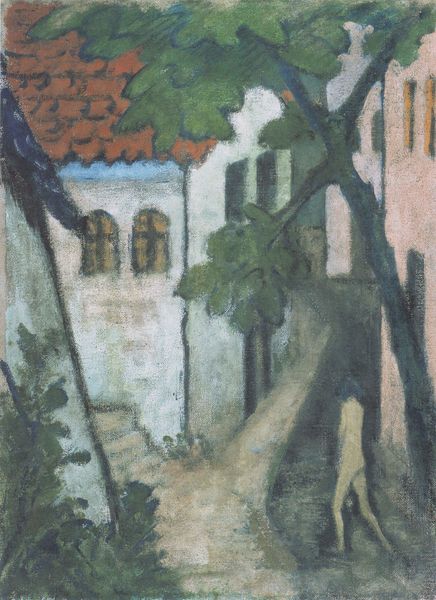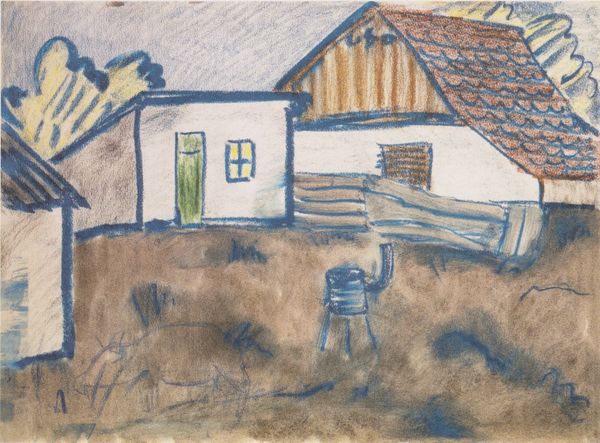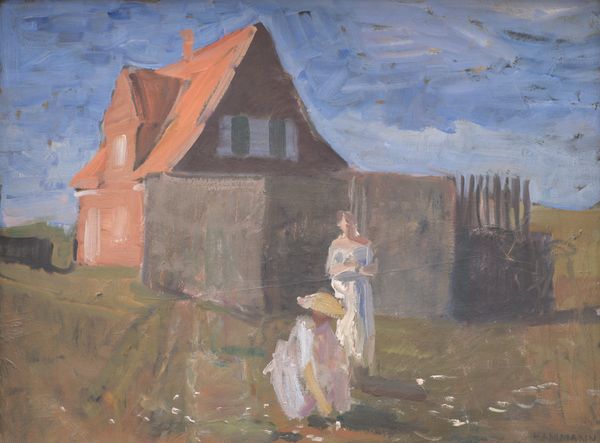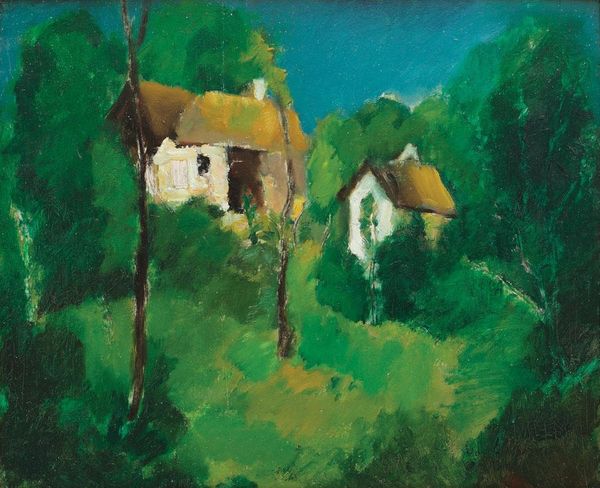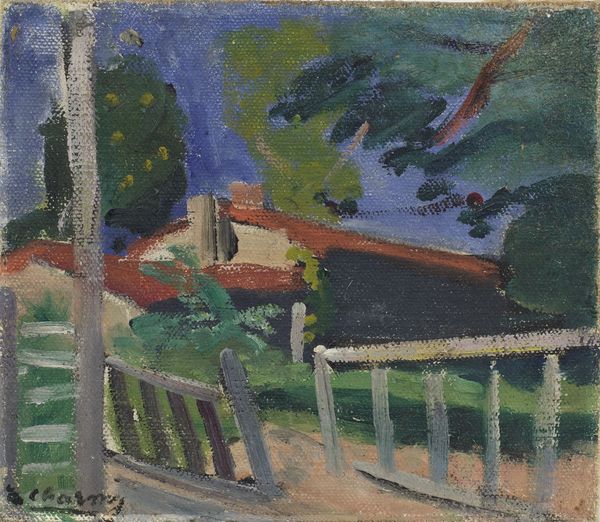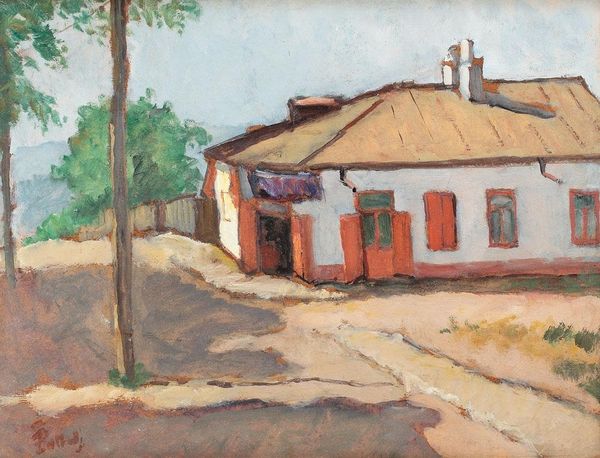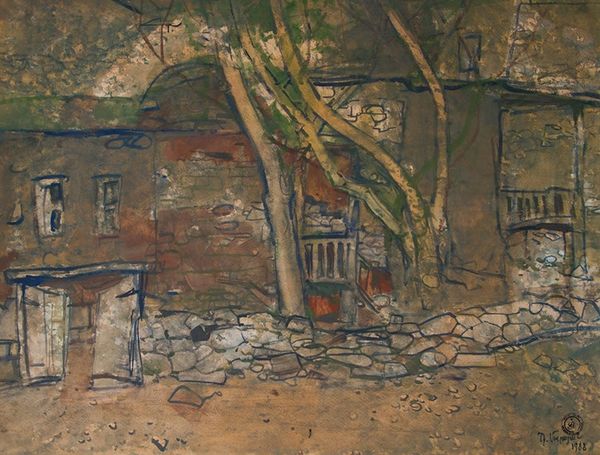
painting, oil-paint
#
painting
#
oil-paint
#
landscape
#
figuration
#
oil painting
#
coloured pencil
#
expressionism
#
watercolor
Dimensions: 96.5 x 82 cm
Copyright: Public domain
Editor: So, this is Otto Mueller's "Zigeunerin Im Garten," painted in 1929. It looks like oil paint on canvas. It's a very dreamlike, quiet landscape... almost unsettling in its stillness. What do you see in this piece? Curator: I see a work deeply embedded in the socio-political anxieties surrounding Romani people in 1920s Germany. The title itself, "Zigeunerin," a German term for "Gypsy woman," reveals a perspective colored by prejudice and exoticism. Consider the Expressionist style – the simplified forms, the muted palette, and the flattened space. It all contributes to an atmosphere that is at once pastoral and alienating. Editor: Alienating? I wouldn't have immediately used that word. How so? Curator: Ask yourself, where is this woman positioned? She's in a garden, ostensibly a domestic space, yet she remains separate, almost obscured by the tall grass. Is she part of this community, or merely tolerated? The "garden" itself, with its unkempt quality, could be read as a metaphor for the liminal spaces occupied by marginalized communities. Editor: That makes me reconsider my initial reaction. The garden almost becomes a kind of barrier. I guess I was drawn to the apparent simplicity, but it’s much more complicated than I first thought. Curator: Exactly. Mueller's work often engaged with themes of social alienation and the experiences of marginalized groups. It's crucial to understand the historical context – the increasing persecution of Romani people leading up to the Holocaust – to fully grasp the weight of this seemingly simple scene. What does that final consideration do to you? Editor: It's chilling. Thinking about the context changes everything. The painting becomes less of a quiet scene and more of a commentary on the precarity of belonging. Thanks for opening my eyes to the layers of meaning woven into it. Curator: Art is rarely ever what meets the eye. By questioning what appears straightforward and digging into history, art shows our cultural landscape in subtle and obvious ways.
Comments
No comments
Be the first to comment and join the conversation on the ultimate creative platform.
